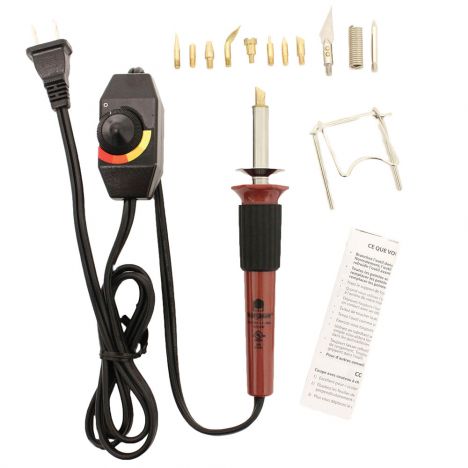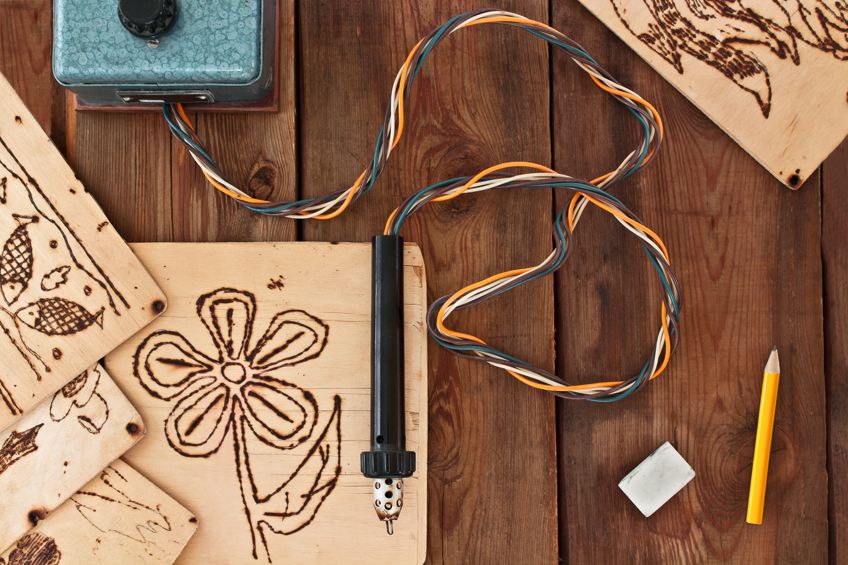
You may ask, "Why is a wood burning tip necessary?" A transfer tip will be all that is needed to get you to the area you want. A variety of products can carry a wood burning tip, including a portable base that can accommodate it. Before you buy anything, make sure you are familiar with the steps involved in adding a transfer tip to a wood-burning tool.
Carbon paper
When using carbon paper as a wood burning transfer tip, you need to prepare your pattern paper in advance. The first step is to fold the pattern paper in half. Next, take a soft-lead pencil and rub the entire design with it. After you have completed the transfer, you can remove the carbon paper and redraw your design. An ink pen can be used to trace your design lines. Burning ink leaves a line so make sure you carefully follow your pattern.
While carbon paper is preferred by most buyers, some users find it difficult and cumbersome to use. For this reason, some prefer to use tracing paper. While it can be used to trace, you need to take care not to burn the paper. This will prevent it from fraying. The best carbon paper for wood-burning is made from traditional materials and can be reused. You can also save time as well as paper. Carbon paper can also serve many purposes. You can usually find the carbon paper in a ziplock bag.
Photo paper
Burning a photo can be tempting. You might be tempted to burn the whole photo. To make sure that the text is properly printed, mirror the image. You should also avoid touching the glossy side of your photo, as it can cause ink to run. If you want to transfer a more detailed photo, you can use a chartpak colorless blender pen. This type of pen costs about $5 and works well for transferring detailed images and lines.
Photo paper is an excellent option for transferring patterns to smaller canvas sizes. Photo paper is simple to find and can be used to replace messy carbon paper. You need to make sure that the photo paper you choose is not absorbs the ink. Lay it ink side down on the wood, and lift it off to reveal a fully transferred image.
Razertip Transfer Shader Pyrography

The Razertip Transfer Shader is one among the most sought-after wood burning tips. The teardrop-shaped stainless steel tip is perfect for shading and transferring heat-photocopied patterns. Three types of handpieces are available to fit different projects. Razertip pyrography can also be used for creating fine lines. Razertip.com provides more information.
All Razertip pyrography pens come with a one-year warranty. You can choose from hundreds of different tip styles. They are the smallest pens available today, which make them perfect for delicate detail work. They are made to last. Heavy-duty models are more durable and have larger pen bodies and thicker tips and connector posts. These models also require a higher heating temperature and a longer cord.
Graphite pencil
When using a graphite pencil to wood-burning transfer tip, a tracing piece of paper is essential. This paper will serve as your guide when transferring a design to wood. The first step in making the transfer process easy is to determine what design you want. You have the option of choosing a simple design or a more intricate one depending on what you want. You may need to print the design before you transfer it.

Place the graphite with the dark side facing toward the wood. You can follow the design lines using light to medium pressure. Once you're finished, remove the paper. You can now transfer the design. If you're a beginner, you can also trace the design freehand without using a design paper. This method, however, won't be as effective as using a graphite pencil because it will cause the wood to become stiff.
FAQ
What should a woodworker be paid per hour?
Hourly rates for professional woodworkers vary depending on many factors such as skill, experience, availability, geographical location, and other variables.
A skilled woodworker can expect an hourly rate of $20-50.
A less skilled woodworker might charge as low as $10 per hour.
How long does it take for furniture to be finished?
It depends on which wood you choose, how complicated your design is and what amount of finishing you apply. For example, hardwoods require more maintenance than softwoods. Hardwoods are more expensive than other woods. But they last longer, and resist moisture better. The typical time taken to finish a piece furniture takes anywhere from one to three month.
Are you able to teach yourself woodworking
Doing is the best way to learn any subject. Woodworking is an intricate art form that requires practice, skill, patience, and experience. Any craft requires patience to master.
Learning how to do something is best done by doing it. Start small and learn from your mistakes.
Is it possible to refinish your own furniture?
Yes! There are plenty of ways to refinish old pieces of furniture without having to pay a pro. Here are some suggestions:
Sandpaper can be used to remove stains and scratches. After that, use a clean towel to wipe the surface.
Clear polyurethane varnish should be applied. Let dry completely before moving furniture around.
Use acrylic paint to paint furniture.
You can stain the furniture instead of using paint. The furniture will get a rich look with the stain.
Apply shellac wax. The wax will add shine to the wood and protect it.
Statistics
- Most woodworkers agree that lumber moisture needs to be under 10% for building furniture. (woodandshop.com)
- Average lumber prices rose about 600 percent between April 2020 and May 2021. (familyhandyman.com)
- Overall employment of woodworkers is projected to grow 8 percent from 2020 to 2030, about as fast as the average for all occupations. (bls.gov)
- In 2014, there were just over 237,000 jobs for all woodworkers, with other wood product manufacturing employing 23 percent; wood kitchen cabinets and countertop manufacturing employing 21 percent. (theartcareerproject.com)
External Links
How To
How to drive a nails in wood
First, choose the right size and type of tool to drive a nail through wood. Claw hammers include mallets, claw hammers (sledgehammers), mallets, ball-peen hammers, hatchets, and mallets. Each type of hammer comes with its advantages and disadvantages. A claw hammer is best for hitting nails or hard objects. However, it can be difficult to pinpoint exactly where the blow will land. A sledgehammer allows you to hit large areas simultaneously, but it is too heavy and cumbersome to use for small tasks.
Place your hand flat on the side of your chosen hammer so that the handle rests in your palm. Grip the handle firmly, but don't squeeze it so tightly that you hurt yourself. Hold the hammer straight up, keeping your wrist relaxed. Now, move the hammer towards the center of the nail by swinging it back. You should feel the impact of the hammer striking the nail. Try swinging a hammer using a block wood to practice until you are comfortable.
Once you are ready to drive the nail, place the hammer close to your body. To ensure that the nail is perpendicular on the surface of the wooden floor, position it. Keep your focus on the tip of each nail. Swing your hammer forward. Then follow through with the motions of the hammerhead. This can be repeated several times to increase the speed of your swing. After mastering the technique, you can add power to your swings. To make it more powerful, hold the hammer up high to your shoulder and then bring it down. This will help you put more energy behind each of your moves.
Once you've made the first nail hole, take out the hammer. Use a pry bar or screwdriver to pull out the rest of the nails. Keep the nails heads in line with the surface of the board to prevent splitting the wood.